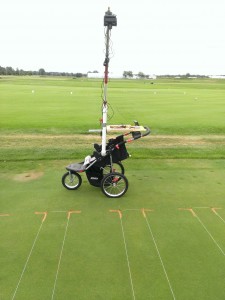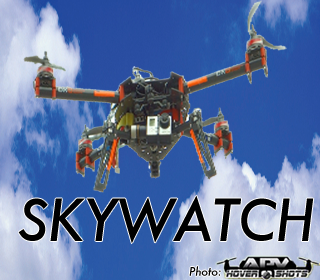Journalist Sues Police for Doubting His Right to Fly Drones

A drone journalist is suing a local police department in a case that may provide a stepping stone to broader legislation dealing with who has the right to fly drones and take video from the sky.
Pedro Rivera filed a suit against two officers of the Hartford, Conn., police department on Feb. 18 after they convinced his part-time employer, a local TV station, to suspend him for a week that began on Feb. 3. The suspension followed a department investigation into whether Rivera illegally used his drone to film the scene of a fatal accident.
Rivera says the officers had no right to interfere with his drone and had no reason to call his employer. He hopes to gain compensation for his loss of work as well as punitive damages from the two officers, and he wants the Hartford police to make it clear they have no right to stop individuals from using drones.
The journalist was allegedly not working when he heard chatter over his police radio, according to the lawsuit Rivera filed. A bad accident had taken place in Hartford, and he drove over to capture some footage of it with his drone — footage similar to video he occasionally sends to local TV station WFSB. Though Rivera says he was standing outside the crime scene and the drone was hovering about 150 feet above the accident, well out of range of the one fatality, multiple officers surrounded and questioned him about his intentions. They asked that Rivera stop flying the drone, and when he did, an officer contacted administrators at WFSB. They told the station that Rivera had compromised the scene of the accident and coaxed them into suspending him for at least a week.
The case is complicated for many reasons.
First, Rivera was acting as a private citizen in this situation. Though he does work as a journalist at times, he was allegedly not being paid for any footage he captured at the scene of the accident. Second, though the Federal Aviation Administration does not condone the use of drones for commercial purposes, journalism does not clearly fall under the commercialism umbrella. Finally, the FAA’s regulations dealing with small unmanned aircraft are unclear.
“Flying model aircraft solely for hobby or recreational reasons does not require FAA approval, but hobbyists must operate according to the agency’s model aircraft guidance,” an FAA spokesperson, who wished to remain anonymous, told Mashable in an email. “In a November 2007 Federal Register Notice, the FAA recognized that people and companies other than modelers might be flying [unmanned aerial systems] with the mistaken understanding they are legally operating under authority of the model aircraft companies guidance, but we stressed that the guidance only applies to modelers, and thus specifically excludes its use by persons or companies for business purposes.”
But this guidance is still only that — not law, — and it’s still unclear how the FAA classifies a commercial enterprise.
When Rivera sends his drone into the sky, is he a hobbyist or a businessman?
When Rivera sends his drone into the sky, is he a hobbyist or a businessman? If a business uses his footage but he is not paid for it, where does that leave him?
These questions can quickly lead down the path to another big question: Should journalists be allowed to use drones?
“There’s a first amendment issue on the federal level as to what is the definition of a journalist,” Matthew Schroyer, founder of the Professional Society of Drone Journalists, which has around 130 members across every continents except Antarctica, told Mashable. Later, he added, “What we’re looking for is an opportunity to show that we can be responsible drone users in a way that improves public knowledge of public events.”
Rivera’s case is still that of a man allegedly acting in a private capacity at the time he was approached by police.
“Even if he were acting as a journalist, there’s no law to prevent what he’s doing,” Norm Pattis, the lawyer Rivera hired to prosecute his case, told Mashable. “Drones present a sort of unique challenge in the regulatory context. There is no statutory law that governs them. There’s no state law in Connecticut that governs their use.” Later, he added, “There is no support in the law for treatment of a remote control aircraft…as a commercial aircraft.”
The FAA is investigating the matter, and this case could provide one of the few building blocks that leads to clearer regulation of drones for private and commercial use.
Cases that ask questions about journalists’ use of drones are likely to continue cropping up in the face of murky regulations. Raphael Pirker, for one, was fined $10,000 by the FAA after the University of Virginia paid him to take video of the campus with a 4.5-pound drone in October 2011. The FAA alleges that Pirker flew his drone recklessly, risking property damage and injury to people in its flight path.
Pirker is fighting the fine, and his fate, like Rivera’s, is yet to be decided. When settled, perhaps the drone regulation picture will be a little less foggy.
Read Rivera’s entire complaint, below:

 I guess the million dollar question is will we see more use of drones in real estate? Can the additional cost incurred in the marketing of a home for sale be justified with “more sales” or by achieving a higher success rate when selling high end homes in Tallahassee?
I guess the million dollar question is will we see more use of drones in real estate? Can the additional cost incurred in the marketing of a home for sale be justified with “more sales” or by achieving a higher success rate when selling high end homes in Tallahassee?



